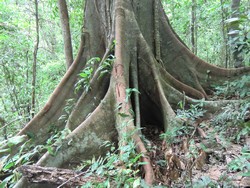Biodiversity aids climate change mitigation
Tropical forest ecosystems are not only hotspots for biodiversity, they also ‘soak up’ carbon dioxide from the air, thereby providing one of the biggest stores of terrestrial carbon. This makes their role increasingly important in climate change mitigation programmes such as ′Reducing Emissions from Deforestation and Forest Degradation′ (REDD). The ROBIN(opens in new window) (Role of biodiversity in climate change mitigation) project studied how much biodiversity and what kinds are required to sustain ecosystems needed for climate change mitigation. Scientists used remote sensing data to improve techniques for monitoring, reporting and verifying carbon stocks, biodiversity, and ecosystem services in tropical Latin America. Researchers also employed large-scale regional models to study how different climate and socioeconomic scenarios and land-use options could influence carbon storage and biodiversity in the long-term. Local case studies were conducted at different sites across a climatic gradient of tropical forest areas. The consortium quantified the role of biodiversity in terrestrial ecosystems in climate change mitigation. Biodiversity indicators were divided into four categories (taxonomic, functional, structural and landscape) and combined into a single ‘ecosystem integrity’ value. This was used to represent the overall health of the ecosystem. Results showed that biodiversity has a direct positive impact on carbon stocks and can be considered a key part of mitigation policies such as REDD+. Remote sensing products were developed as proxies for biodiversity, including maps of land cover, vegetation and ecosystem integrity. These will be used to support practical techniques for monitoring biodiversity. It was also found that an indicator of ecosystem integrity can be calculated for data rich and data poor areas and was used as the basis for a Mexican biodiversity monitoring programme. It will also help in developing policies for improved management of logged and secondary forests to improve biodiversity to help increase the storage of carbon. ROBIN will therefore improve outcomes from climate change mitigation and biodiversity protection measures and help reduce rates of biodiversity loss. In addition, it will help in the design and implementation of REDD+ and other similar schemes in Latin America to ensure increased storage of carbon in forests and multifunctional landscapes.







